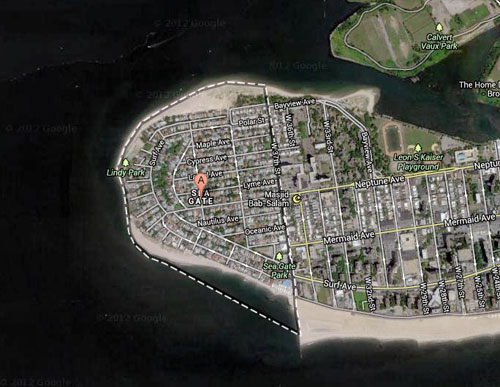They can have their beach and gate it, too!
The Army Corps of Engineers will spend $30 million to restore the Hurricane Sandy-ravaged, private beaches of Seagate, a gated community on the western tip of Coney Island, and residents living on the other side of Brooklyn’s Berlin Wall say the influx of taxpayer money means they should be allowed to cross the border and take a dip.
“If you’re using public funds, you need to grant public access,” said Brighton Beach activist Ida Sanoff.
But Seagate representative Tami Maldonado argued that her neighborhood is entitled to the government groins, since neighborhood’s beaches have melted away thanks to a 1992 project that created stony wharves to fight erosion in Coney and Brighton Beach — a project Seagate opted out of because it would have forced the community to open its shore to the city’s masses.

“That project took away our beach and it was not supposed to,” said Maldonado.
And elected officials who helped allocate the cash for the project say the work on Seagate is necessary to keep up the integrity of the connected beachfronts.
“The beaches are all one holistic piece, and when you reinforce in Seagate, you are reinforcing the whole Coney Island peninsula,” said Ilan Kayatsky, a spokesman for Congressman Jerrold Nadler.
The money will let the Army Corps of Engineers construct four rock jetties at the tip of the peninsula — similar to the ones that jut out every few hundred feet from the Coney Island and Brighton Beach waterfronts — to capture sand in the sea currents and add acres to the receding Seagate coast.

The Army Corps of Engineers confirmed that the project would strengthen the integrity of the entire landmass — but claimed it was not required to restore Seagate’s sand.
“The work is primarily benefitting the original Coney Island project,” said Corps spokesman Christopher Gardner.
Kayatsky said construction of the retaining jetties would begin later this year, and be complete inside of two years.

Reach reporter Will Bredderman at wbredderman@cnglocal.com or by calling (718) 260-4507. Follow him at twitter.com/WillBredderman.




















